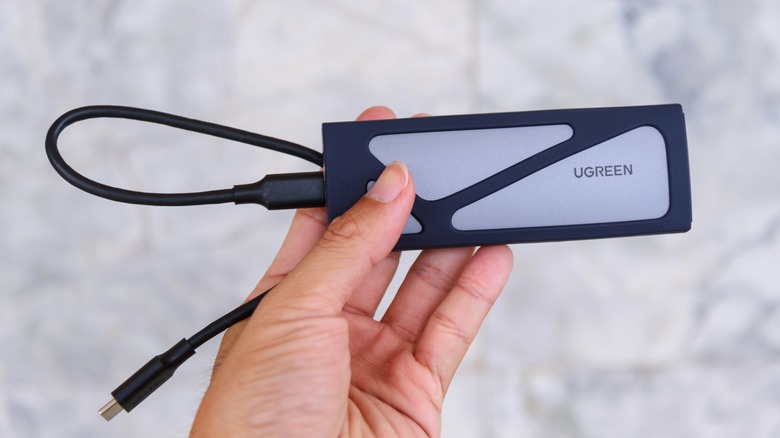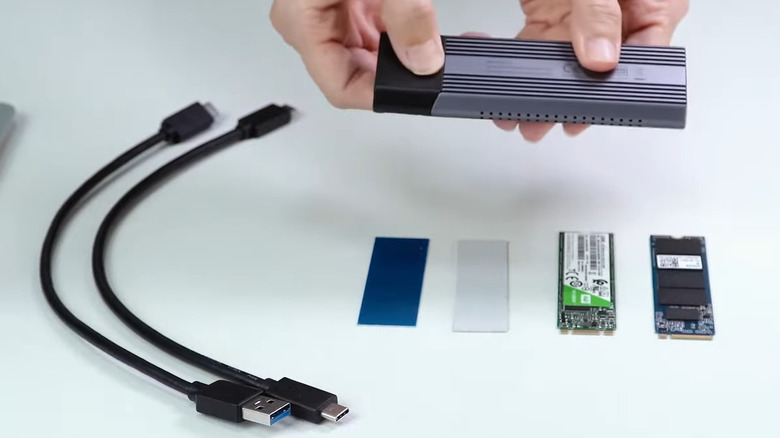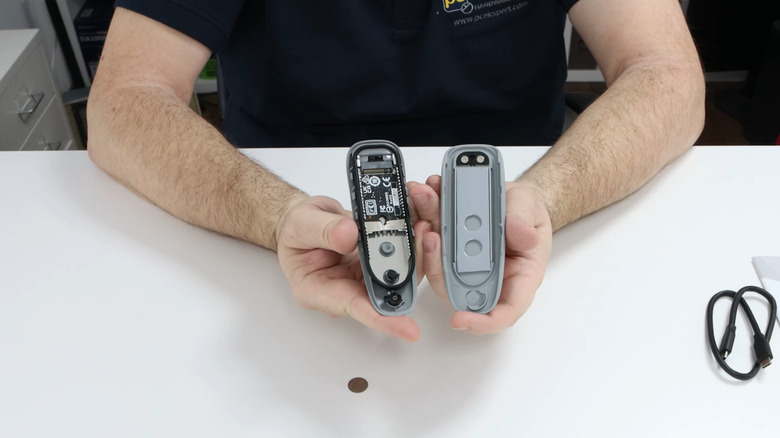You Can Turn Your Old SSD Into A Portable Drive - Here's How
We may receive a commission on purchases made from links.
Most laptops and computers now come with SSDs for internal storage thanks to their speed and reliability. But these drives are often on the smaller side, usually between 256GB and 1TB. Upgrading your internal SSD is a smart way to add more space, but that doesn't mean the old one has to go to waste. As long as it's in good shape, you can turn it into a fully functioning external storage drive for your laptop, tablet, phone or other devices.
Unlike external hard drives, internal ones don't have a casing or a USB port that lets you connect them directly to other devices. Fortunately, there's a simple fix: an SSD enclosure. It's a small case with a slot for your internal SSD and a built-in connector like a USB-A or USB-C port. Once you place the SSD inside the enclosure, it works just like an external drive and you don't need to install any drivers or specialized software to make it work. The enclosure not only gives it a USB interface but also keeps it protected.
If your old SSD is already on its last legs, putting it in an enclosure won't bring it back to life, so it's a good idea to test the drive before spending money on an enclosure.
Buying a storage enclosure
Portable SSD enclosures are generally affordable. You can find some for as little as $11.99 on Amazon. There are also pricier options that come with extras like RGB lighting and sleeker designs. The kind of enclosure you should get depends on a few things. For instance, M.2 SSDs come in different lengths, so you'll want to make sure the one you pick can fit your specific drive. If it's an older SATA SSD, you'll need an enclosure that's compatible with SATA connections.
Next, check the type of USB interface the enclosure uses, whether it's USB 2.0 or 3.0. The speed of your internal SSD will be limited by the capabilities of the USB port, so it's worth confirming this detail on the product listing page. Also, take note of the enclosure's build material. A metal enclosure is usually a better choice than plastic, as it offers more protection against bumps and occasional drops. If you plan to travel with the drive or expect it to be handled roughly, it's better to choose a sturdier option.
If you have a M.2 NVMe SSD, a UGREEN enclosure for $15.99 is a solid choice. It supports USB 3.2 Gen 2 and works with 2230, 2242, 2260, and 2280 form factors. It also features an aluminum case with a thermal pad to keep the drive cool during extended use.
How to use a storage enclosure
Once you've got the enclosure, using it is pretty simple. The exact steps might vary a bit depending on the model, but here's a general guide:
- Open the enclosure case. Some cases need to be unscrewed while others simply slide open.
- Carefully install the SSD into the closure connector.
- Make sure to align the golden contacts on the SSD with the enclosure's interface.
- Secure the other end of the SSD by screwing it into the enclosure.
- Add the thermal pad, if included, on top of the SSD so it can dissipate heat easily.
- Finally, put the enclosure case and screw it in.
Your old SSD can now serve as a portable storage drive. Just plug it into your computer or phone using the included cable. If the enclosure has more than one port, use the fastest one for best performance. You can swap out the internal SSD anytime. Even if you don't have a spare one, it's often cheaper to buy a new SSD and use the enclosure than to purchase a pre-built external SSD.


